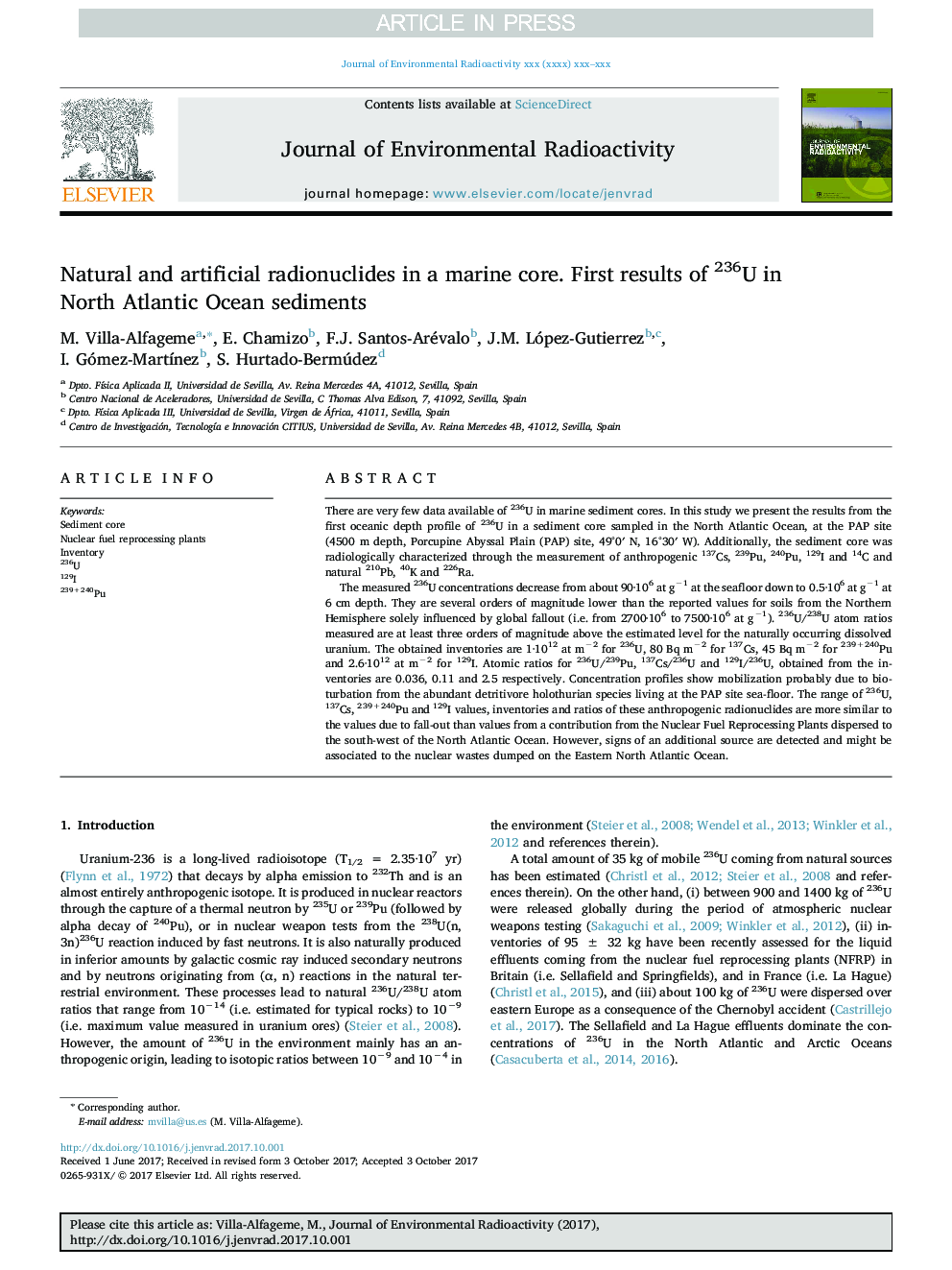| Article ID | Journal | Published Year | Pages | File Type |
|---|---|---|---|---|
| 8080673 | Journal of Environmental Radioactivity | 2018 | 9 Pages |
Abstract
The measured 236U concentrations decrease from about 90·106 at gâ1 at the seafloor down to 0.5·106 at gâ1 at 6 cm depth. They are several orders of magnitude lower than the reported values for soils from the Northern Hemisphere solely influenced by global fallout (i.e. from 2700·106 to 7500·106 at gâ1). 236U/238U atom ratios measured are at least three orders of magnitude above the estimated level for the naturally occurring dissolved uranium. The obtained inventories are 1·1012 at mâ2 for 236U, 80 Bq mâ2 for 137Cs, 45 Bq mâ2 for 239+240Pu and 2.6·1012 at mâ2 for 129I. Atomic ratios for 236U/239Pu, 137Cs/236U and 129I/236U, obtained from the inventories are 0.036, 0.11 and 2.5 respectively. Concentration profiles show mobilization probably due to bioturbation from the abundant detritivore holothurian species living at the PAP site sea-floor. The range of 236U, 137Cs, 239+240Pu and 129I values, inventories and ratios of these anthropogenic radionuclides are more similar to the values due to fall-out than values from a contribution from the Nuclear Fuel Reprocessing Plants dispersed to the south-west of the North Atlantic Ocean. However, signs of an additional source are detected and might be associated to the nuclear wastes dumped on the Eastern North Atlantic Ocean.
Related Topics
Physical Sciences and Engineering
Energy
Nuclear Energy and Engineering
Authors
M. Villa-Alfageme, E. Chamizo, F.J. Santos-Arévalo, J.M. López-Gutierrez, I. Gómez-MartÃnez, S. Hurtado-Bermúdez,
